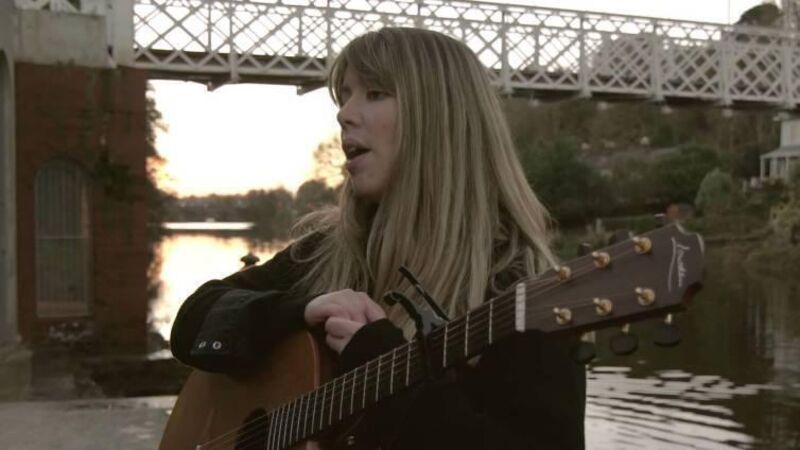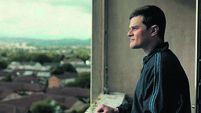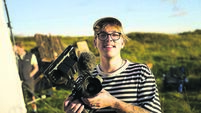Music film is a love letter to Cork city and its inhabitants

Niamh Regan in A City Under Quiet Lights
A CONFESSED addiction to recording live music, a passion for Irish artists, and a deep love for Cork, led musician and filmmaker Miles O’Reilly to capture musicians performing in iconic Cork locations.
Mixed with footage of Cork people going about their daily business, graffiti-clad walls, and historical sites, A City Under Quiet Lights is a moving tribute to everyday life.
Watching it leaves a profound impression, a reminder of the importance of little things, simple things, and the incredible power of music to stir the soul.
The film has two parts: Volume I is available to watch now on O’Reilly’s YouTube channel, and Volume II is launching on November 23.
O’Reilly has a long history of making films about Irish musicians, filming them in their natural habitat, on stage, with an instrument or microphone in their hands. His work in raising the profile of folk singers and independent artists has made him quite an icon in the business, but unlike many other filmmakers, O’Reilly has gentle humility.
“The Quiet Lights Festival here in Cork puts folk and traditional music in the spotlight, and folk music is something I love very much,” he said.
When the founders of the festival asked to film some artists performing, they knew in their hearts that I wouldn’t need much direction; they let me loose during the festival. They created the most perfect project for me.
The artists, including Lisa O’Neill, Niamh Regan, and Caoimhín Ó Raghallaigh, are filmed at locations that include the historic setting of Triskel Christchurch, the Shandon Bells, the Crawford Gallery, and under the iconic Shakey Bridge.
O’Reilly says Cork-based artist and producer Marjie Kaley was instrumental in bringing the locations together and says Cork has a wealth of locations to choose from.

“Marjie Kaley, from the Quiet Lights Festival, worked tirelessly behind the scenes to get permission to film at the locations we used. We had a list of Cork locations that stood out.
“Cork has a high density of places you can walk to within the city; there is so much history.
We settled on five incredible places 10 minutes walk from each other, so it wasn’t much of an ask to meet an artist at Shandon at 2pm, film their performance, and then meet someone else in the Triskel later that day.
O’Reilly says both films look visually ambitious, but were easy to bring together.
“Cork is the perfect city to do what I do and to work in my style, partly because it has so much beauty and interesting places, but also because of its size, it makes filmmaking do-able and easier to navigate.”
Alongside the performance, O’Reilly’s camera captures many aspects of the city and he says he took the footage over many months.
O’Reilly’s love affair with the county began almost 20 years ago, and he knows the city as well as any resident.
I am in love with Cork and have been coming here for over 18 years. My wife is from Cork, so we come here regularly.
“Initially, I tried to capture as much as possible when I went between the venues, but then I started to get footage each time I visited with my wife.
“Every time I went down to Cork, I’d have my camera, and amazing new street art and cultural things always spring up on the streets of Cork. There is so much going on all the time. It’s a creative high.”
The filmmaker says he is captivated by Cork’s sense of community and can feel the connectivity every time he visits.
“We know that Cork is famous for that thing where everybody knows each other’s uncle; everyone will find the link with each other. My wife Aideen is from Douglas, and her father, John Macken, was the manager of Roches Stores for decades. That’s how everyone knows Aideen, as John Macken’s daughter, and the number of people connected by that information is incredible.
There is social commentary in how people interact; add that to the creativity, and Cork is a special place. I can’t visit now without my camera; I always gather lovely little bits.”
While the films highlight professional artists, O’Reilly also captures buskers performing on the streets, and there is recognition of Cork legends like the late Fergus O’Farrell, whose lyrics hang in Coughlan’s Bar.
O’Reilly is passionate about emerging musicians, particularly those from folk and traditional backgrounds, and says it is vital to give them platforms, like in his films.
The industry should nurture and support emerging artists financially. There’s no such thing as a development deal any more, but there used to be.
“David Bowie and Elton John got development deals where companies nurtured them for six or seven years until they bloomed. We don’t have that kind of attention from the music industry any more, so we are losing talented musicians because of it.”
The filmmaker hopes that by watching A City Under Quiet Lights, people will feel more connected to the musicians.
“Audiences are more affected by being in the presence of a musician in the same room. You can listen to an album, but your appreciation goes up ten notches when you see the artist live. In the film, I am using Cork to bring people close to the artists, to feel that kinetic energy as if you were physically in front of them.”
A City Under Quiet Lights: Volume 1 is available on Miles O’Reilly’s YouTube channel, and Volume II will be available on November 23.







